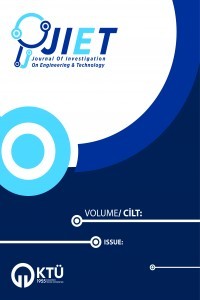Development of Programming Learning Environment With Compiler Techniques
Development of Programming Learning Environment With Compiler Techniques
Programming Learning Environment, Compiler, Lexical Analysis Syntax Analysis, Finite State Machines,
___
- Özyurt, Ö., Özyurt, H., Aras, S. (2016, May). Çocukların Kodlama Öğrenebilecekleri Ortamların İncelenmesi. In International Computer and Instructional Technologies Symposium (ICITS) on (pp. 399-400).
- Resnick, M., Maloney, J., Monroy-Hernández, A., Rusk, N., Eastmond, E., Brennan, K., Kafai, Y. (2009). Scratch: programming for all. Communications of the ACM, 52(11), 60-67.
- Sengupta, P., Farris, A. V., Wright, M. (2012). From agents to continuous change via aesthetics: learning mechanics with visual agent-based computational modeling. Technology, Knowledge and Learning, 17(1-2), 23-42.
- Kölling, M. (2010). The greenfoot programming environment. ACM Transactions on Computing Education (TOCE), 10(4), 14.
- García, P. G., De la Rosa, F. (2016). RoBlock-Web App for Programming Learning. International Journal of Emerging Technologies in Learning, 11(12).
- Bers, M. U., Flannery, L., Kazakoff, E. R., Sullivan, A. (2014). Computational thinking and tinkering: Exploration of an early childhood robotics curriculum. Computers and Education, 72, 145-157.
- Papadakis, S., Kalogiannakis, M., Zaranis, N. (2016). Developing fundamental programming concepts and computational thinking with ScratchJr in preschool education: a case study. International Journal of Mobile Learning and Organisation, 10(3), 187-202.
- Fessakis, G., Gouli, E., Mavroudi, E. (2013). Problem solving by 5–6 years old kindergarten children in a computer programming environment: A case study. Computers and Education, 63, 87-97.
- Armoni, M., Meerbaum-Salant, O., Ben-Ari, M. (2015). From scratch to “real” programming. ACM Transactions on Computing Education (TOCE), 14(4), 25.
- Koorsse, M., Cilliers, C., Calitz, A. (2015). Programming assistance tools to support the learning of IT programming in South African secondary schools. Computers and Education, 82, 162-178.
- Aho, A. V., Sethi, R., Ullman, J. D. (2007). Compilers: principles, techniques, and tools (Vol. 2). Reading: Addison-wesley.
- Mogensen, T. Æ. (2009). Basics of Compiler Design. Torben Ægidius Mogensen.
- De Graaf, D. (2017). Practical use of Automata and Formal Languages in the compiler field.
- ISSN: 2687-3052
- Yayın Aralığı: Yılda 2 Sayı
- Başlangıç: 2018
- Yayıncı: Karadeniz Teknik Üniversitesi
Development of Programming Learning Environment With Compiler Techniques
Erol İSKENDER, Atakan AKSOY, Şükrü ÖZŞAHİN, Hamdi Tolga KAHRAMAN, Semih Dinçer KONAK
Betonarme Binalarda Hasar Tespiti ve Hasar Belirleme Yöntemleri
Yusuf YANIK, Gonca KAMBER YILMAZ, Temel TÜRKER
Farklı Kür Koşullarının Kolemanit İkameli Betonların Dayanımına Etkisi
